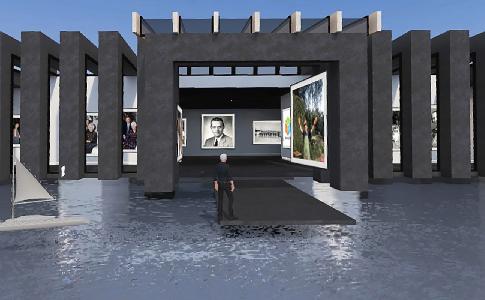
Inside Temple University’s Campus Police radio room where staffers monitor city 911 calls that are within Temple’s boundaries.
Computer-aided dispatch (CAD) doesn’t have any of the flash of the latest innovations in police technology. There are no cool gadgets involved and it’s more than a decade old. But it can boast one thing: it does its job.
The system, a partnership started in 2000 between the Philadelphia Police Department and University of Pennsylvania and Temple University police, allows campus police to see city 911 calls that occur in their boundaries. Campus police can then respond to nearby jobs that city police can’t get to immediately.
Penn and Temple public safety officials said the impact of the system has been huge. In certain areas of the city, it allows campus police to work with city police in order to respond to 911 calls faster. Penn police respond to about 135 city calls a month, or more than two percent of the nearly 6,000 calls it responds to a month, said Penn’s VP of Public Safety Maureen Rush, while Temple police respond to about 300 city calls a month, or 30 percent of the roughly 1,000 calls it responds to a month, said Temple’s deputy director of Campus Safety Services Charles Leone.

Inside Penn Public Safety’s communications center where dispatchers can field calls within Penn’s boundaries from the city’s 911 system. Photo courtesy of Penn.
Before the CAD partnership, a lower priority 911 call could sit in a queue for hours if city police didn’t have the resources to respond, Rush said. Now, if that call is within Temple or Penn boundaries, campus police can take that job off the hands of city police.
The system also helps keep campus police safe, said Temple’s executive director of Campus Safety Services Carl Bittenbender, who used to work with the Police Department’s first deputy commissioner of Science and Technology Charles Brennan (Brennan helped to facilitate the CAD partnership during his time at the Police Department).
Before this partnership with city police, there was no reliable way for campus police officers to know about 911 calls in their patrol area. A Temple police officer could be walking by a reported home invasion but have no idea, Bittenbender said. Now, the lines of communication between campus police and city police are not only open, they’re automated.
This is part of Technically Philly’s multi-part series looking at the state of police IT: where it’s been, what’s it like now and where it’s going. Find the other stories in the series here.
Before you go...
Please consider supporting Technical.ly to keep our independent journalism strong. Unlike most business-focused media outlets, we don’t have a paywall. Instead, we count on your personal and organizational support.
3 ways to support our work:- Contribute to the Journalism Fund. Charitable giving ensures our information remains free and accessible for residents to discover workforce programs and entrepreneurship pathways. This includes philanthropic grants and individual tax-deductible donations from readers like you.
- Use our Preferred Partners. Our directory of vetted providers offers high-quality recommendations for services our readers need, and each referral supports our journalism.
- Use our services. If you need entrepreneurs and tech leaders to buy your services, are seeking technologists to hire or want more professionals to know about your ecosystem, Technical.ly has the biggest and most engaged audience in the mid-Atlantic. We help companies tell their stories and answer big questions to meet and serve our community.
Join our growing Slack community
Join 5,000 tech professionals and entrepreneurs in our community Slack today!





